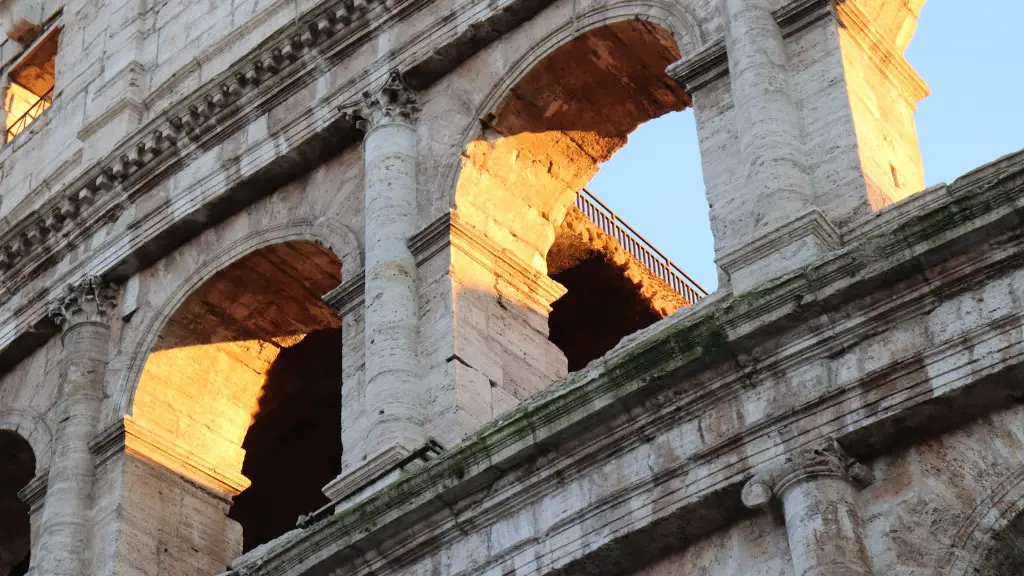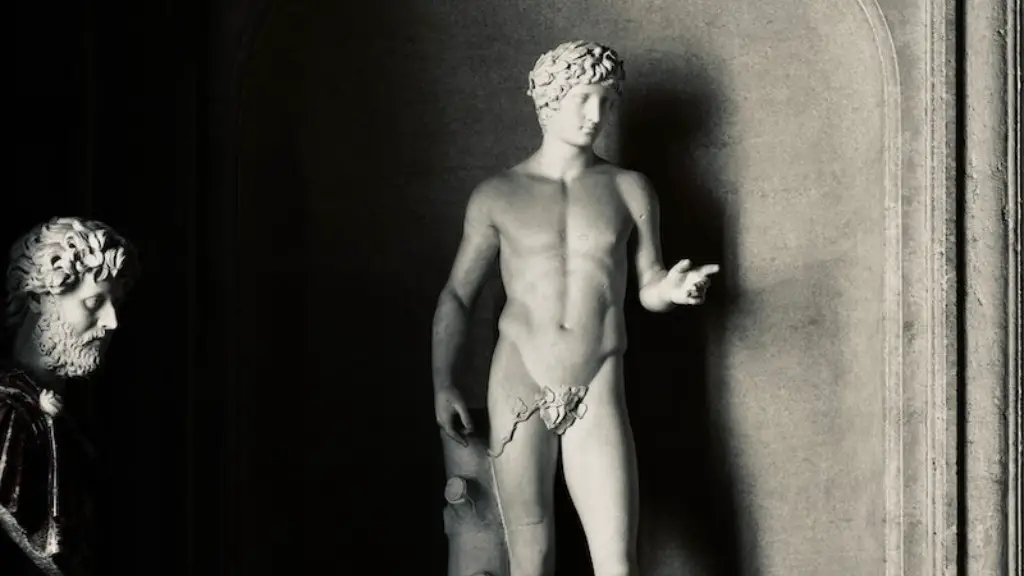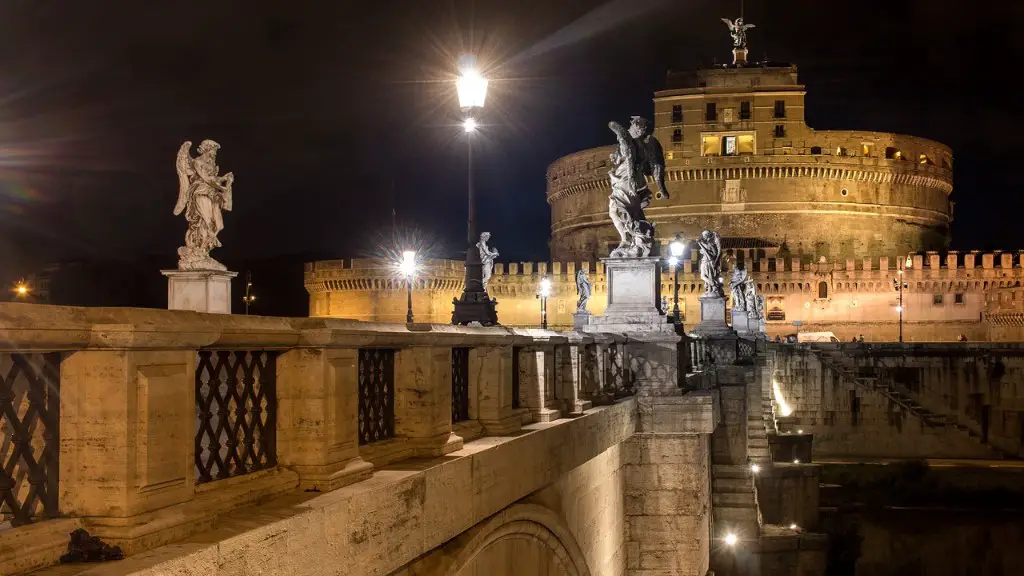Introduction
Ancient Rome was an advanced society in many ways, not the least of which was the extensive public works that they developed. Their engineering was impressive by any standard, and the public works they constructed had a lasting effect on the city’s development. From aqueducts and sewers to theaters and public baths, the public works of Roman citizens are still being studied, with insights from experts on everything from construction techniques to their impact on the Roman economy. While some of their achievements have been surpassed by modern engineering feats, the means by which Ancient Rome built them still remain relevant today.
Water Supply
One of the most impressive engineering feats of Roman citizens was their development of an efficient water supply. They had to build aqueducts that could carry water from the main supply over considerable distances from sources such as rivers and springs. The most famous of these is the Aqua Virgo, which was constructed in 19BC and is still used in modern-day Rome. Romans also built sewers, which enabled them to dispose of waste water efficiently and keep the city clean. They were also ahead of their time in developing ways to filter the water and make it potable so that it could be used for drinking.
Architectural Wonders
The Romans were also known for their impressive architectural projects. They built an incredible variety of structures that ranged from private homes to massive amphitheaters such as the Colosseum. This iconic venue could hold up to 50,000 spectators and was used for gladiatorial contests and other public spectacles. This massive undertaking was completed in a single decade thanks to the engineering prowess of its architects. The Roman Forum, on the other hand, was the commercial, political, and religious center of the city, and its public works included temples, basilicas, and palaces.
Public Services
Rome was also well known for its extensive public services. One of the most impressive was its public baths, which provided citizens with hot and cold baths and swimming pools. These places were so luxurious that they even had massage services and libraries. The Romans also built theaters, many of which are still standing today. These venues were the main form of entertainment for Roman citizens, and some were large enough to accommodate up to 15,000 people.
Infrastructure
The public works of the Romans did not stop at the city gates, however. They built an extensive network of roads throughout the region to transport goods, people, and military forces. They developed bridges and paved roads that were built to last. The Appian Way, for example, was built around 312BC and is still in use today.
Economic Effects
The public works of Ancient Rome had a significant impact on the city’s economy. By creating an efficient infrastructure, they were able to transport imports and exports more quickly, thus bringing in more wealth. They also made it easier for citizens to travel between cities and towns, which stimulated economic activity and helped the city’s commercial sector. They also provided employment opportunities to citizens, who worked on building projects, or provided services such as transporting goods.
Technological Advances
Finally, the construction of Roman public works also spurred advances in technology. For example, the engineers of Rome developed a concrete and brick mixture that was stronger and more durable than the material used in the past. They also learned how to shape vast quantities of stone, brick, and mortar with accuracy and precision. This knowledge was then passed on to other cultures and civilizations, allowing them to build impressive structures of their own.
Environmental Impact
Surprisingly, the construction and maintenance of Roman public works had a positive impact on the environment. The engineering led to better water management and efficient waste disposal, which made the city much cleaner and healthier than it had been in the past. Furthermore, the development of roads and bridges made it easier for people to travel, which reduced the amount of pollution from transport.
Political Implications
The political implications of the Roman public works were also considerable. The roads enabled the Roman armies to move quickly and efficiently, which allowed them to expand their empire rapidly. Furthermore, the construction of palaces, temples, and theaters not only served to entertain citizens but also to demonstrate the power and glory of the ruling classes. This was an effective way to maintain the loyalty of Roman citizens and to control the population.
Cultural Impacts
Finally, the public works of Ancient Rome also had a significant impact on the culture of the city. The construction of impressive theaters, The Roman Forum, as well as various public baths, gave rise to new forms of entertainment and social interaction. Furthermore, the aqueducts, sewers, and roads provided the city with an efficient infrastructure, which improved the quality of life of its citizens.
Psychological Factors
The impressive public works of the Romans had psychological benefits as well. The construction of grandiose and well-engineered structures created a sense of awe and admiration in the population. These works of engineering were also a form of self-expression for its citizens, who were proud to be part of such a great civilization. This pride and admiration for the city drove them to make further contributions in other areas, such as trade, culture, and politics.
Political Impact on Other Nations
The impressive public works of the Romans had a profound influence on the development of other nations. The engineering techniques used by Roman citizens were adopted by many other cultures, allowing them to create even more impressive structures. Furthermore, their achievements served as an inspiration for other civilizations to strive for greatness in their own public works. This enabled other nations to reach a level of engineering prowess that was otherwise unattainable.
Spiritual Impact
The construction of temples and other religious sites also had a profound spiritual impact on Roman citizens. By building structures such as the Pantheon, the Forum of Peace, and the Temple of Vespasian, the Romans were able to demonstrate their commitment to their gods and religious beliefs. This had an impact on how citizens viewed their own spirituality, as well as how others viewed them in relation to their gods.
Conclusion
The public works of Ancient Rome still have an impact on us today. From the aqueducts and sewers to the theaters and public baths, these engineering feats demonstrated the ingenuity of Roman citizens, and their achievement had an undeniable impact on the city’s development. Even in our modern world, their engineering accomplishments are still being studied and admired.



